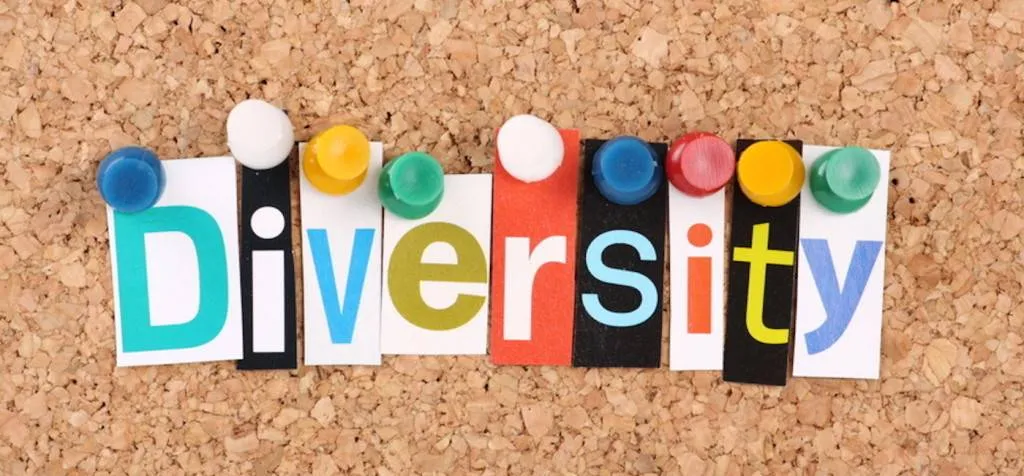
Reading Diversely FAQ: Part 5
It’s no secret that diversity in reading is an important value at Book Riot. We write about it so often, in fact, that we’ve noticed that the same questions come up again and again from our readers in the comment sections of those posts. I, along with Riot Contributing Editors Swapna and Preeti, have answered a series of questions over the last few weeks, so anyone who has asked these questions (to us or just to yourselves) can get a straight answer. Just search the “readdiverseFAQ” tag on the site to find every post in the series. Welcome to the final edition!
____________________

1. Why are diverse books specifically important in children’s literature?
Amanda: While around ⅓ of the population of the United States consists of people of color, only about 10% of children’s books contains any multicultural content at all- a number that has not changed since 1994. And that’s ANY multicultural (not white) content AT ALL. So African-Americans are in less than 10% of children’s books. Latinos, less than 10%. Native Americans, less than 10%. This is troubling for two reasons. First, it means that children of color- who make up the majority of public school classrooms– barely ever see themselves in the books they read. An African-American girl doesn’t see herself winning the Olympics, battling dragons, selling lemonade, or going on magical adventures in the books that are available to her now. My own twin boys, who are 4 years old, have never seen a children’s book with Filipino boys- and that’s in a house with shelves and shelves of children’s books. It’s not for my own lack of trying. Not seeing yourself in books and media makes kids feel other, less than, different, and not worthy of representation. The second issue here is that by erasing people of color from children’s literature (or simply not including them at all), we’re reinforcing the idea that whiteness is the default- this in a country where a child in any given classroom is more likely to be brown than white. It’s not just a dangerous message- it’s literally a lie, in aggregate. By having 90% of children’s literature be by and about white people, we send our most impressionable readers- children- the message that this skin color and only this skin color is normal, and that other skin colors are “other.” I absolutely do not want my two boys to get that message. This is why (I am not joking here) our children’s book collections consist almost entirely of books about dinosaurs, anthropomorphized trains, and Olivia the pig. No humans. They’ll have to look to the real world, at other kids on the playground and in our church and neighborhood, to learn about what makes kids from other cultures both just like them and also different from them in fun, interesting ways that are to be celebrated. They’re not going to learn it in books right now. That’s why diversity is especially important in children’s literature. To learn more, check out and support the work of We Need Diverse Books. Preeti: As we’ve said in previous FAQ, diversity in literature has a direct link to creating empathy in the reader. It normalizes difference. It de-exotifies. People fear what they don’t understand, and allowing children to learn about all types of characters in turn allows them to build an understanding of what the world actually looks like. Swapna: I honestly cannot remember reading a book about an Indian main character when I was a kid. I went straight from children’s books to classics. I remember the first time I read Salman Rushdie in high school, it was a transformative experience, because this was the first time I was reading about someone like me. I grew up in a very white Midwestern town, so seeing myself reflected in literature was incredible and huge and showed me that my version of normal could, in fact, be normal. Had I been able to read that earlier, as a child, it would have led to a lot less of an isolated growing-up experience.2. Isn’t it enough to have at least one PoC character?
Preeti: Will that one PoC character feel constantly defined by his or her difference? Is that a plot point? Then I guess, sure. If that’s the point of the story. Otherwise, we might be skirting into tokenism territory. Tokenism is an empty, symbolic gesture, enacted only to deter criticism. I don’t think anyone wants a PoC character for the sake of a PoC character. Odds are if you’re throwing some color into the mix just because the rest of the story is white, then it’s hard for me to believe that that diverse character is going to be a fully realized, real character. If you have a number of white characters, and one PoC, that PoC is going to be defined by their difference, and their color becomes their identity. …That doesn’t really sound like good writing. We’re not saying that a writer must have at least 2 – 4 diverse characters in any given manuscript. It’s not about filling a bucket. But it’s worth thinking about: what world do you live in that is all-white? Until I was 13 I lived in the tiniest of towns in West Virginia, and I still knew other people of color. You can find diversity everywhere if you take a look around. Especially with how accessible the rest of the world is now days. And you know what, while writing, authors are always actively combating our default setting. People tend to default to white characters unless they’re told otherwise (and even sometimes when they are told otherwise). It’s just another way that PoCs are written out of literature. The world is a huge, colorful place. Why not represent that in writing? Amanda: When we get this question, the wording really bothers me. “Isn’t one enough?” The implication is easy to hear: “for you people” or “to get you off my back.” If you’re writing a story and you add one person of color to satisfy an outside group or to keep from getting flak, you’re not writing a good story. You’re not reaching out into the world and bringing the truth of what it is to be a human being into your story. You’re being, to be honest, lazy. All of us- even the best-intentioned people in the book world- have established internal biases that we operate under when we’re not actively fighting them. That’s the side-effect of living in this not-post-racial-but-trying-to-pretend-to-be society. So it’s not surprising when authors default to white characters and then toss in a token POC to check off the diversity box. That’s not just doing a disservice to your readers, though- it’s doing a disservice to your art. Try harder. Swapna: I think the key here is reflecting the world around you, which is a multicultural world, That’s a great thing, and diversity should be celebrated. It’s not about filling a quota, as these ladies have said. It’s about writing what’s real.3. Why is it important to have PoC characters in stories that are about more than just their racial background?
Swapna: When I read a novel about India, set in the slums or a small village, with a heart-wrenching story, I’m enthralled. But that’s not the life I lead, and those aren’t experiences I can truly identify with. I think it’s so important for us to be able to find books that reflect who we are. My racial background is a very important part of me, but it does not define me; it does not tell you who I am or what I have done. And if the only books available about PoC characters are about their racial backgrounds, it sends the messages that PoC people should be defined by their race. The truth is that the United States is full of all kinds of people, with all kinds of skin colors. I have more in common with the white woman next door than I do with a village woman in India. Literature should reflect the diversity present in the United States. Preeti: Because we are more than our skin color. There’s nothing worse than being defined by one trait. Yes my skin color has played a part in building the person I am, but it is not all that I am. There can be stories about a PoC’s racial background, but when that’s all people get, when they’re segregated into the Multicultural section, then that reduces them to their difference. People are complex and can be driven by any number of motivations. And by recognizing that part of PoC characters, we’re recognizing them as human characters. Amanda: What they said! People of color are just that: people. We don’t all have the same opinions or beliefs or lives. People should be able to find themselves represented in fiction, but that doesn’t mean authors need to only ever write about the struggle. You can have Japanese characters who are doctors just doing their doctor thing (because those people exist in real life) and black characters who are superheros just doing their superhero thing and Latino characters who are battling dystopian governments, like you do. And this will happen naturally as people of color are viewed as regular human beings, as opposed to tokens or vehicles for authors to write about the other. ____________________ That’s it for our series! If we missed any questions you still have about diversity in reading, leave them in the comments and we’ll do our best to answer! Check out past installments here: Part 1 Part 2 Part 3 Part 4 ____________________ In the market for the most romantic shirt in the history of shirts? You can get it at the Book Riot Store! (Just in time for Valentine’s!)








